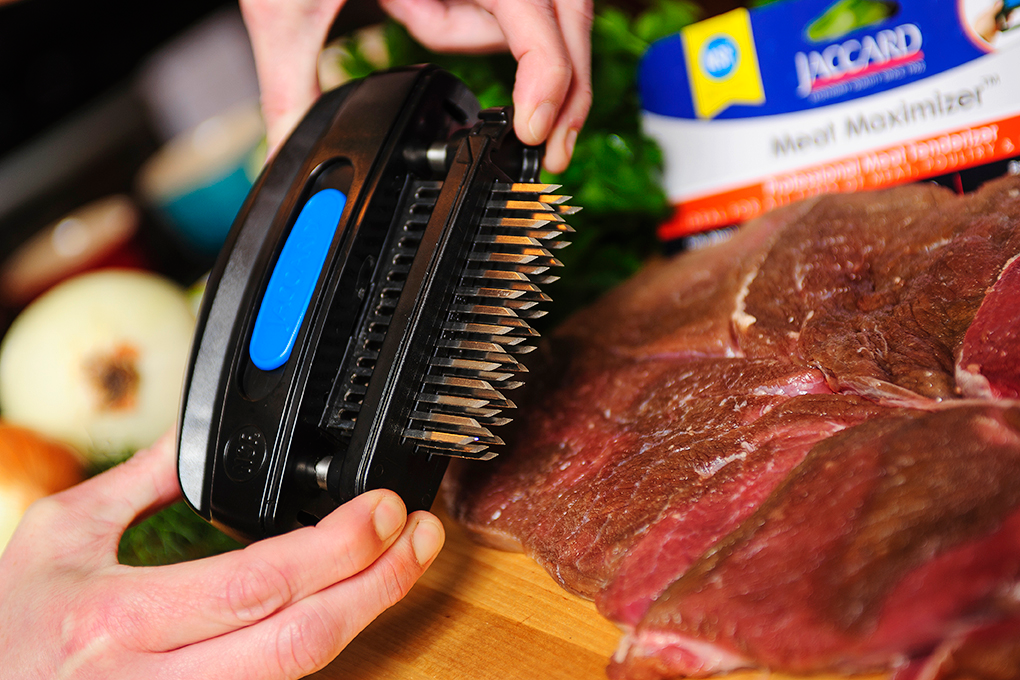How Long Should You Leave Meat Tenderizer On for Best Results?
Written By James Morgan
If you've ever pondered over the question, how long should you leave meat tenderizer on, you're certainly not alone. Many barbecue enthusiasts and home cooks grapple with this query to achieve that perfect, juicy, and tender bite. As part of our exploration into the nuances of grilling and tenderizing meat, let's delve deeper into the techniques and timing that can elevate your barbecue game.

Understanding Meat Tenderizers
Before tackling the timing, it's essential to understand what meat tenderizers are and how they work. Meat tenderizers generally fall into two categories: natural and commercial.
Natural Tenderizers
Natural tenderizers include ingredients like pineapples, papayas, and even kiwi. These fruits contain enzymes, such as bromelain and papain, which break down muscle fibers and collagen, making the meat softer.
Commercial Tenderizers
Commercial meat tenderizers found in stores typically contain powdered enzymes that function similarly to natural enzymes.
You can learn more about other meat tenderizers and how they work through various reliable sources.
But the vital question remains: how long should you leave meat tenderizer on? Timing is crucial as it affects the meat's texture and flavor.

Factors Influencing the Timing
Several factors dictate the optimal duration for leaving meat tenderizer on:
Type of Meat
The type of meat you're working with significantly influences the timing. Tougher cuts like flank or skirt steak may require more time compared to tenderloin or ribeye.
Concentration of Tenderizer
The concentration of the tenderizer also matters. Higher enzyme concentrations may necessitate shorter application times to avoid over-tenderizing.

Timing Guidelines for Different Meats
Beef
For tougher cuts of beef, leaving the tenderizer on for about 30 minutes to 1 hour can suffice. Any longer and the meat might become mushy.
Chicken
For chicken, especially boneless cuts, leaving the tenderizer on for 15 to 30 minutes is usually adequate. Over-tenderizing can result in a less desirable texture.
Pork
Pork chops or loins typically need about 30 minutes with a meat tenderizer. Over-tenderizing can lead to a mealy texture.

How to Use Meat Tenderizers Effectively
Understanding how to use meat tenderizers correctly can dramatically impact the outcome.
Firstly, evenly coat the meat with the tenderizer. Ensure all parts are covered, especially the thicker sections.
Secondly, allow the meat to rest for the recommended duration. Do not exceed this time frame to avoid adverse effects.
Rinse the meat lightly before cooking to remove any excess tenderizer.
Common Mistakes and How to Avoid Them
Many home cooks fall victim to a few common mistakes:
- Over-tenderizing: Leaving the tenderizer on for too long can make the meat too soft, almost mushy.
- Uneven application: Failing to cover all parts of the meat can result in uneven texture.
- Not washing off excess: The leftover tenderizer can affect the flavor and texture during cooking.
Understanding the correct usage techniques is crucial to avoid these pitfalls.
Alternative Methods for Tenderizing Meat
If you're wary of using chemical tenderizers, several alternatives work just as well:
Marinades
Using a marinade that contains acidic elements like lemon juice, vinegar, or wine can help break down muscle fibers.
Mechanical Tenderizers
Mechanical tenderizers like mallets or blades physically break down the muscle fibers. Learn more about how to use these on various meats here.
Slow Cooking
Slow cooking at low temperatures can help break down collagen, resulting in tender meat.
Frequently Asked Questions (FAQs)
Does leaving the meat tenderizer on too long ruin the meat?
Yes, leaving meat tenderizer on for too long can cause the meat to become overly soft and mushy.
Can you use baking soda as a meat tenderizer?
Yes, baking soda is a powerful tenderizer. However, it should be used sparingly as it can alter the meat's flavor. For more details, check out this baking soda guide.
Is meat tenderizer safe to use?
Yes, commercially available meat tenderizers are safe to use when used according to the instructions.
As an Amazon Associate, I earn from qualifying purchases.



